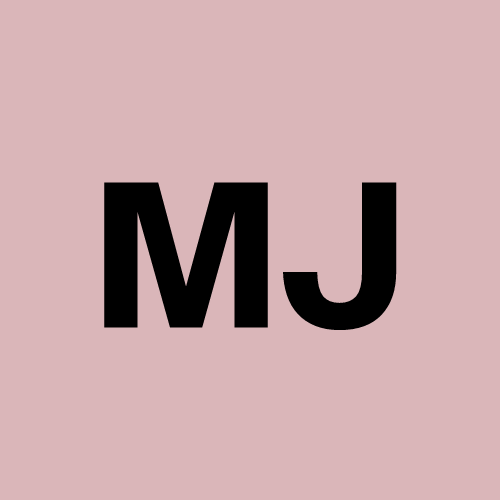Dmail vs. the Email Giants: A Web3 Revolution iMessaging
 Mary Joseph Akpan
Mary Joseph AkpanTable of contents
In an era where digital communication is king, email remains a cornerstone of personal and professional interaction. However, as privacy concerns grow and blockchain technology reshapes the digital landscape, new players like Dmail are challenging the dominance of traditional email services such as Gmail, Outlook, and Yahoo Mail, as well as other Web3-based alternatives like EtherMail and Mailchain. So, how does Dmail stack up against the competition?
What is Dmail?
Dmail is a decentralized, Web3-native email and messaging platform built by Dmail Network, designed to prioritize user privacy, security, and data sovereignty. Unlike traditional email providers, Dmail leverages blockchain technology, zero-knowledge proofs (ZKP), and decentralized identity (DID) systems to offer a secure communication hub that spans multiple blockchains. It’s not just an email service—it’s a full-stack messaging solution that integrates features like asset management, NFT transfers, and subscription hubs for Web3 businesses and users.
Dmail vs. Traditional Email Services
Traditional email giants like Gmail (Google), Outlook (Microsoft), and Yahoo Mail have long dominated the market with their ease of use, massive storage, and integration with broader ecosystems. However, they come with significant trade-offs:
Privacy and Control: Gmail and Outlook are centralized services that rely on user data for advertising revenue or other business purposes. Emails are scanned for targeted ads, and users have little control over how their data is stored or used. In contrast, Dmail encrypts every email and uses decentralized infrastructure, ensuring that users—not corporations—own their data. Posts on X highlight this distinction, with users praising Dmail’s “no ads, no surveillance” approach.
Security: Traditional providers offer basic encryption (e.g., TLS), but their centralized nature makes them vulnerable to breaches or government requests. Dmail’s use of zero-knowledge proofs and Trusted Execution Environments (TEE) provides a higher level of security, protecting communications from interception and ensuring only the intended recipient can access them.
Features: Gmail and Outlook excel with features like calendar integration and cloud storage, but Dmail goes beyond email. It supports Web3-specific functionalities, such as transferring cryptocurrencies or NFTs directly through messages, making it a versatile tool for blockchain users.
User Experience: Traditional services are polished and user-friendly, with decades of refinement. Dmail, while innovative, is still evolving—its interface may not yet match the seamless experience of Gmail, but it’s rapidly improving with updates like Web2 Google login integration and Subscription Hub 1.0 (launched in 2023).
Dmail vs. Other Web3 Email Solutions
Dmail isn’t alone in the Web3 email space—competitors like EtherMail, Mailchain, XMTP, and Push Protocol are also vying for attention. Here’s how Dmail stands out:
EtherMail: Focused on crypto wallet-based email, EtherMail offers rewards for user engagement and integrates with Web3 wallets. However, Dmail’s broader feature set—including NFT domain marketplaces and cross-chain compatibility (37 chains and counting)—gives it an edge as a comprehensive communication hub, not just an email service.
Mailchain: Mailchain emphasizes blockchain-based messaging tied to wallet addresses, with a sleek interface. While it’s strong on privacy, it lacks Dmail’s advanced features like subscription hubs or AI-powered spam filtering, which enhance user and business utility.
XMTP: The Extensible Message Transport Protocol (XMTP) is a decentralized messaging protocol used by apps like Coinbase Wallet. It’s lightweight and developer-friendly but doesn’t offer a full email experience like Dmail, which blends Web2 and Web3 capabilities (e.g., Google login alongside blockchain logins).
Push Protocol: Push focuses on notifications rather than full email functionality, serving as a messaging layer for dApps. Dmail, by contrast, combines notifications, email, and marketing tools, positioning it as a more robust solution.
Security Edge: Dmail’s use of ZKP and TEE security is frequently cited as a differentiator. Posts on X note that this makes it “more secure” than competitors, while its AI-driven spam filtering adds practical value.Why Dmail Shines
Dmail’s strength lies in its vision: it’s not just an email alternative but a Web3 communication ecosystem. Its decentralized autonomous organization (DAO) governance, planned since 2022, promises community-driven evolution, while partnerships with projects like Linea and Phala Network bolster its technical backbone. For users, the ability to earn rewards (e.g., through engagement or airdrops) adds a financial incentive absent in traditional services.
However, Dmail isn’t without challenges. Its complexity might intimidate non-crypto-savvy users, and its market adoption lags behind giants like Gmail, which boasts over 1.8 billion users. Web3 competitors also have their niches, making the space highly competitive.
Conclusion
Dmail redefines email for the Web3 era, offering unmatched privacy, security, and blockchain integration. Compared to traditional services, it’s a privacy-first rebel; against Web3 rivals, it’s a feature-rich contender aiming to be the “Gmail of Web3.” Whether it can convert mainstream users remains to be seen, but for those in the blockchain world, Dmail is a compelling choice reshaping how we communicate online.
Subscribe to my newsletter
Read articles from Mary Joseph Akpan directly inside your inbox. Subscribe to the newsletter, and don't miss out.
Written by
